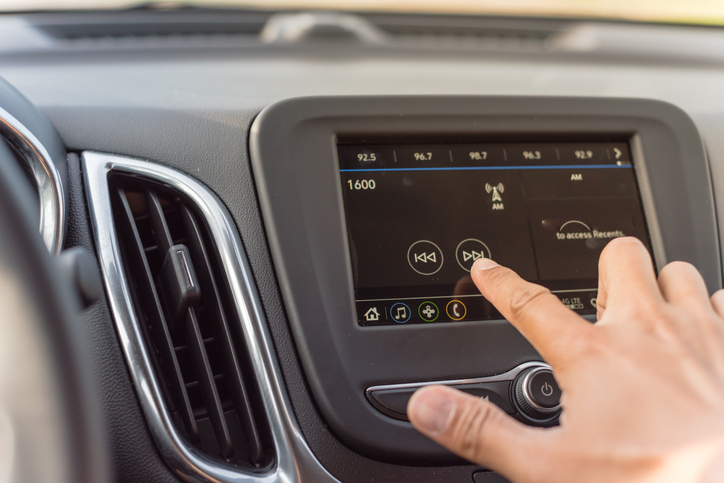Push Buttons vs. Touchscreens: The Pros and Cons Explored for Mechanic Program Students
In vehicles, there are many settings that can be adjusted to maximize the comfort and safety of driving. For ages, simple push buttons and dials have been used to turn up heated seats, turn on the radio, and adjust the air conditioning. However, as automotive technology has advanced, cars have become equipped with smartphone-like computer systems that allow drivers to adjust different settings on a touchscreen and give them access to additional features.
What are some of the features drivers can make use of when they use touchscreen infotainment systems in their vehicles? Are they really any better than the old-school push buttons? Let’s explore the answers to those questions below.
Touchscreen Infotainment Systems May Offer Connectivity
Cars are more comfortable and connected than they’ve ever been thanks to modern infotainment systems. Now, drivers and passengers can remain connected to the internet, connect their smartphones to vehicles, plan their routes, and adjust the temperature–all from an intuitive touchscreen that’s reminiscent of a tablet. In addition to the many features that facilitate comfortable, convenient rides, touchscreen infotainment systems boast many safety features like reverse parking cameras, 360-degree view cameras, and sensors. If you’re thinking of learning how to become a mechanic, you may be interested to know what vehicle features work best. How do modern infotainment systems measure up to push buttons? Let’s take a look at road test results to get a better idea of the pros and cons of each feature.

What Does the Data Say?
Vi Bilägare, a Swedish magazine, tested a dozen vehicles with the purpose of determining once and for all whether touchscreen infotainment systems are really any better than old push buttons. Considering all of the safety features touchscreen systems have to offer, the results might surprise you. Tasks like turning on the heated seat, turning the radio to a specific station, resetting the trip computer, and changing lighting settings were timed. The results of the test reveal that the push buttons on a 2005 Volvo V70 allowed drivers to complete the four tasks in as little as ten seconds each–about a fourth of the time it took for the tasks to be completed in vehicles with advanced touchscreen connectivity.

After you’ve completed your mechanic program, you’ll likely encounter many new vehicles with modern infotainment systems. Though the idea of having all features in one place seems beneficial, Vi Bilägare’s study shows that touchscreen systems may increase the risk of distracted driving because they cause drivers to look away from the road for as much as thirty seconds at a time. As impressive as they are, touchscreen infotainment systems may present a safety issue.
Should You Recommend Push Buttons or Touchscreens After Auto Mechanic College?
So, what should you recommend to your future clients throughout your auto mechanic career? You certainly can’t stop people from buying cars with touchscreen systems as they do offer many great safety benefits, like increased visibility with their cameras and sensors. On the other hand, perhaps you should make it a point of duty to highlight the benefits of touch buttons in cars, like their ease of use and potential safety benefits.
With auto mechanic training at ATC, you can expect to learn much more about automotive systems like the ones we’ve discussed today. In addition, you will learn about welding fundamentals, preventative maintenance, electric fundamentals, an introduction to the automotive industry, and much more.
Ready to enroll in auto mechanic college?
Contact ATC Cambridge for more information!


